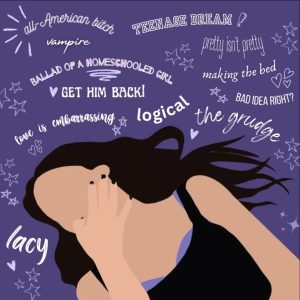Online users should take control on media influences of body image
March 25, 2019
These days it is easy to find a link between media and its effect on body image.
We are exposed to platforms such as YouTube and Instagram almost on a daily basis. On those platforms, online personalities do what they do best. They promote their own lifestyle hacks. Lifestyle hacks that include how to do one’s hair, makeup and body maintenance. Whether it be in the form of CrossFit or kale smoothies, these lifestyle promotions scream, ‘You! Yes, you can be this way too!’
It is easy to give in to the glamour and the seemingly attainable lifestyle that these online celebrities promote. However, it is also easy to find blame with body representation in media. What is being promoted as the ideal beauty or visual standard can take a toll on viewers with how they see themselves in their own body image. So much to the point that we forget that these forms of social media are like a tool. A tool that, although promotes certain body images, can also be used for positive body awareness.
Many of us on campus probably spend our free time watching videos and posts online between classes. Sometimes we may mindlessly click away at the next viral video and it’s best to remind ourselves that we have the choice in the content we choose to watch. What we choose to type into the search bar is what we get and sometimes we forget about these consequences.
For example, take into account the thigh gap trend that occured in the early 2010’s. There was a surge in popularity amongst women in wanting to achieve a gap between their thighs. Which provoked a market for exercises in order to achieve that goal. Online personalities, such as, fitness gurus gave what the online market wanted: videos to achieve these body image goals.
Fortunately, the trend died as people realized that thigh gaps, like many physical markers of beauty, are subjective. What this stands to tell us is that sometimes we play a part in feeding negative body images to ourselves and others. If we hold such a strong influence in online views then we have the power to encourage body positivity.
We control media as much as it controls us, which doesn’t always have to feed a market to change ourselves to fit a certain image. In fact, there are a number of individuals that are already taking this empowerment into their own hands.
According to Insider magazine, British blogger Stephanie Yeboah shares her own personal posts and images promoting a healthier take on body image posts. She already has an estimated number of 22.3 thousand followers and counting on her Instagram page @nerdabouttown.
Another account to take note of is The EveryMan Project that shares images of men that range from vulnerability and various body types to tackle body image issues that men face.This account can be found @theeverymanproject on Instagram and already has 13.4 thousand followers. What these numbers strongly tell us is that social media can be used to promote body positivity.
That being said, social media is a tool. It all depends on how it’s used. We as individuals choose to subscribe and follow the images that we see online. If we can feed the views to fuel the need for smoothie bowls then we can also feed the views to fuel positive body image awareness.






